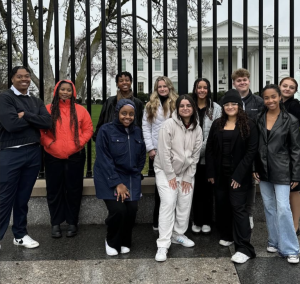The Rollins community seldom takes advantage of CFAM’s resources. CFAM plans to generate enthusiasm about the museum to students of all disciplines, not just art majors.
Sketches from Picasso and Cezanne, prints from Matisse, and a collection that ranges from 14th-century antiquity to modernist and contemporary art…
That image only skims the surface of what the Cornell Fine Arts Museum (CFAM) has to offer. And yet, members of the Rollins community seldom take advantage of the museum’s resources.
Bruce A. Beal Director Ena Heller made significant efforts to expand the museum’s recognition among the Rollins community. Heller has attended faculty meetings and encouraged professors to take their students to the museum and to relate topics taught in the classroom to the diverse art at CFAM.
“There is a general misconception that the museum can only be useful for those who study art or art history. It isn’t only for students who are tied to those academic studies,” Heller said.
Perhaps the most well known change that Heller made is the free admission for everyone year-round in 2013, in celebration of CFAM’s 35th Anniversary. The museum chose to extend free admission into 2014.
“We dropped the admission fee, which is important for some people,” said Heller. “I think of it more as a symbolic gesture to say ‘This is for everyone.’”
Bekki Charbonneau ‘16, an art history minor, has been interested in art since she was a young girl. For her, the museum is a therapeutic place to study art from the past.
“As much as I enjoy seeing new art by artists I am not familiar with, it can be very exciting recognizing art from artists I have already studied, because it’s like bumping into an old friend in a new location,” she said.
Although the museum may serve as a refreshing place for people like Charbonneau, how can the museum be beneficial as an academic asset?
CFAM’s goal is to show that the museum’s diverse encyclopedic collection can be a valuable resource for Rollins students and the greater Orlando community in general.
“I’m hoping someday not very far away we can become the same resource to UCF, Valencia and Stetson students as to Rollins students,” Heller said. “I think that looking at art and exploring art gives one a lot of different skills in very unexpected places.”
Some of the newer features of the museum include a first-ever audio guide and docent-led weekend tours. In addition, the Rollins faculty exhibition is on display, along with upcoming gallery talks that focus on graduating art students’ pieces.
Though the spring season might garner some buzz around the museum, there is still one group of Rollins students that might feel particularly isolated when it comes to CFAM: evening students.
“Holt students aren’t very encouraged to be a part of anything,” said Holt student Katie Kimball. “It’s quite cynical, but we’re the ugly stepchildren of the college.” For Kimball, the museum is an important asset to a Rollins education, though she has only visited once as a freshman for a class assignment.
It’s this issue of inclusion that may be the key to understanding how intimidating the museum can be to students who are not studying fine art.
“My point of view as a museum professional is that museums are for everyone,” said Heller. “In a public museum you don’t see just artists and art curators—you see all kinds of people.”







Be First to Comment